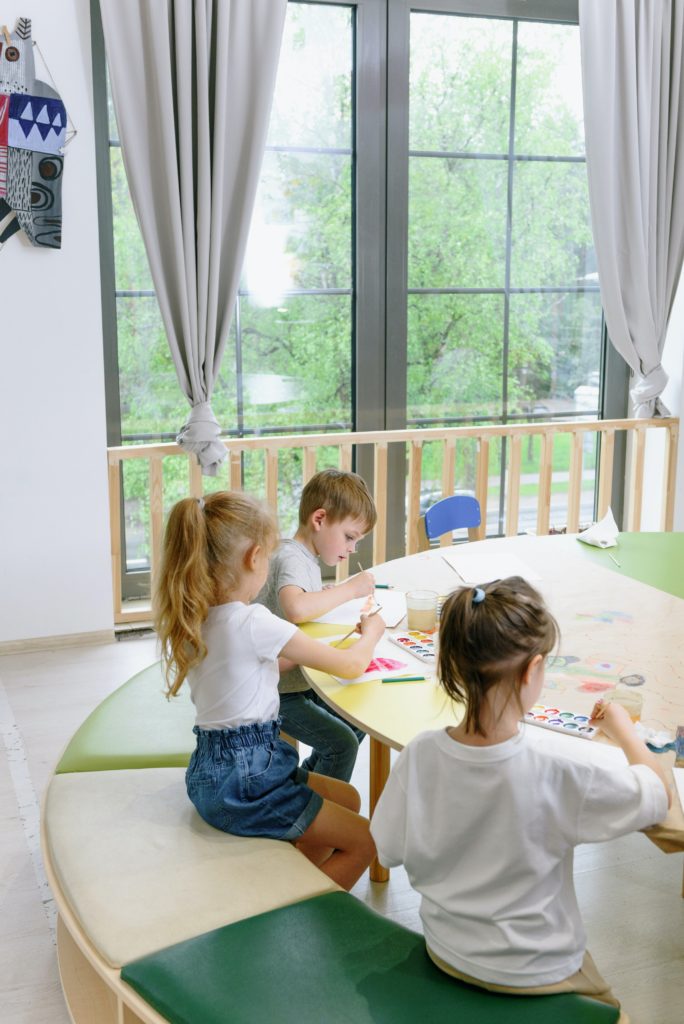The lazy days of summer are coming to an end, and it’s time for kids to start gearing up for a new school year. While this transition can be an exciting time, it may also come with its fair share of challenges. As parents, you play a vital role in helping your children navigate this shift with ease and confidence. In this blog post, we’ll explore practical tips and strategies to successfully transition kids from summer to the school year.

Establish Routines
Consistent routines are necessary for a successful transition. As the summer winds down, gradually shift bedtime and wake-up times closer to the school schedule. This will help kids readjust their internal clocks and ensure they are well-rested for the upcoming challenges. Structuring daily routines for meals, homework, and playtime helps children feel secure during this period of change. Involve your older kids in planning and implementing routines, giving them a sense of ownership and responsibility in managing their schedules.
Set the Stage for Learning
An organized environment is essential for focused learning. Before the school year begins, help your children declutter and organize their study spaces. Designate a quiet area free from distractions where they can concentrate on their studies. Prepare school supplies, backpacks, and lunchboxes in advance to avoid last-minute stress. Teach them the importance of keeping everything organized.
Reconnect with Friends and School Community
Social connections play a crucial role in boosting kids’ confidence and excitement about the new school year. Arrange playdates with school friends before classes begin to rekindle friendships and foster a sense of belonging. Attend school orientations and events, allowing your kids to familiarize themselves with the school environment and meet their teachers. Maintain open communication with teachers and staff to address any concerns or questions, ensuring your child feels supported and safe in their learning environment.
Address Fears and Anxieties
Transition periods can evoke a mix of emotions in children. Acknowledge and validate your kids’ feelings about the upcoming changes, whether they are excited, nervous, or unsure. Encourage open communication about any fears or anxieties they may have. Help them identify coping strategies, such as deep breathing or visualization exercises, to manage stress and nerves. Engaging in activities that promote relaxation and mindfulness, like going for walks or practicing yoga together, can also be beneficial in easing emotional transitions.
Balance Work and Play
Finding a balance between summer relaxation and academic focus is crucial during this transition. While it’s essential to ease back into study routines, remember to allow time for leisure activities and hobbies. Consider incorporating play-based learning and educational outings to keep learning enjoyable and engaging. Set realistic expectations for the school year and celebrate your child’s achievements, no matter how big or small.
Manage Screen Time
With the summer break often associated with increased screen time, it’s essential to address the shift to more academic responsibilities. Set screen time limits during the school week to allow for focused studying and restful sleep. Encourage screen time for educational purposes, such as watching educational videos or engaging in interactive learning apps. As a family, you can designate screen-free time to promote bonding, communication, and quality time spent together.
Remain Positive
Amidst the hustle of transitioning to the school year, take the time to acknowledge your child’s growth and progress. Recognize their efforts and positive attitude during the transition, regardless of any academic challenges. Plan a special back-to-school celebration to create positive associations with the new school year. Reflect on the journey of transitioning together, and share your child’s feelings and experiences in a supportive and encouraging manner.
Remember that each child’s transition may be unique, so be flexible, patient, and supportive during this period of change. With your guidance and encouragement, your child will embrace the new school year with excitement and readiness for the adventures that lie ahead.





